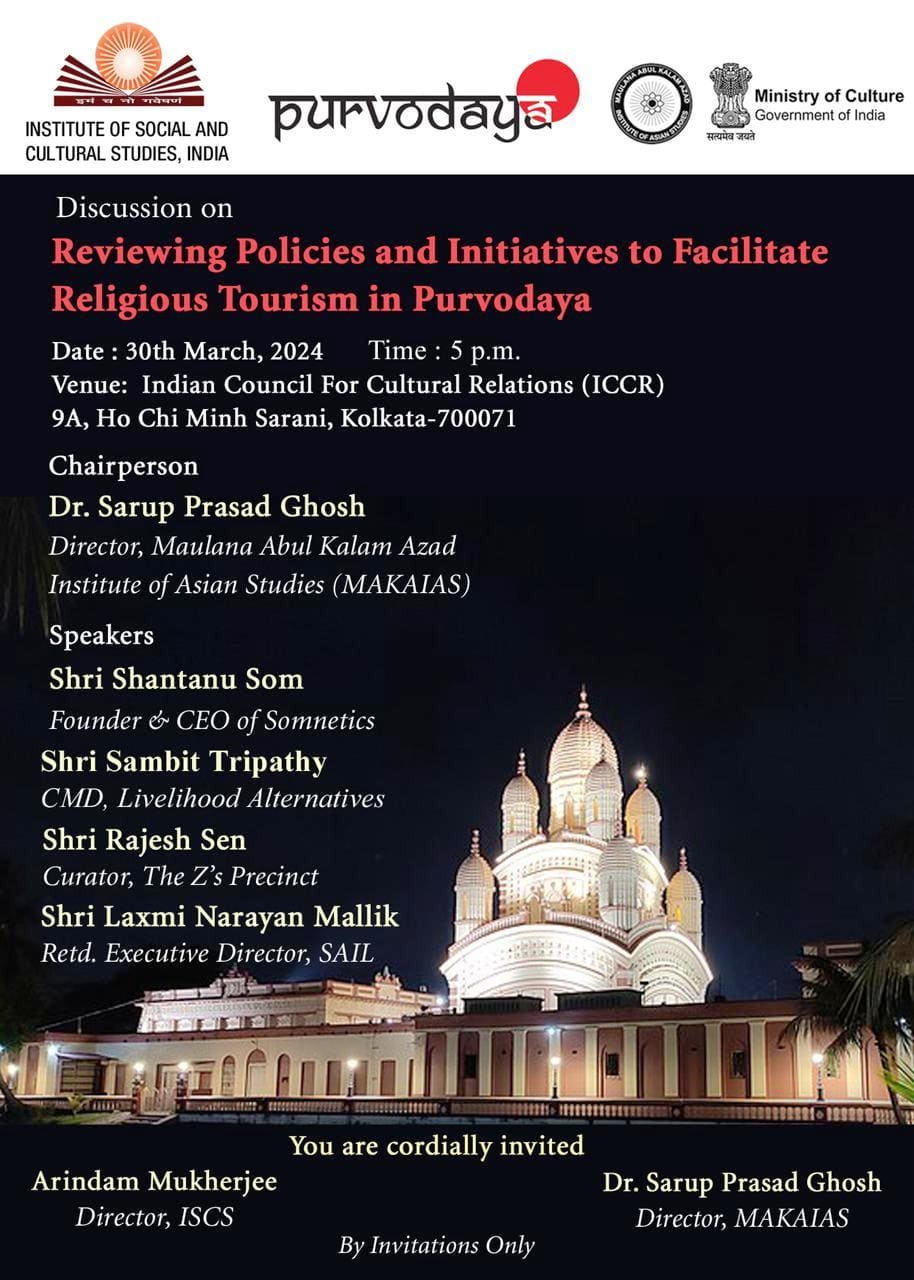
Purvodaya: Growth For East
The Institute which over a decade with its Eastern working capital has been addressing connectivity, infrastructure, trade, energy and security along with neighbourhood policies. As a research community seeks an interest to breed a platform on Purvodaya: Vision and Mission to know-discuss and create awareness amongst the national and International columns about the implications, translation and blueprints of the significant policy framework on “Mission Purvodaya” deliberated in 2020.The Institute has already emanated on its objective with the launch of a of Bilingual (English/Odia)Bi-Monthly Bulletin- “Purvodaya: The Rise of Opportunities”.
The Bulletin would comprise of an articles/messages on development of the regions within the Mission Purvodaya framework in Odia as well as in English .The Chapter would also encompass research projects, national and International conferences along with a series of regular discussions in form of webinar to engage multi-sectoral stakeholders in the process of emulating Eastern India to not only a self –reliant passive market and an industrial hub but also a center of spurring jobs, entrepreneurships, and most importantly a layout to transmute plan of action repeatedly defined and streaked through Act East, ASEAN, BIMSTEC, BBIN and other diplomatic initiatives for the security, trade, commerce of nations most vigorous region – “The Purvodaya”.
Vision and Mission
One of the biggest, most dominant cooperation in history operated long before the emergence of tech giants like Amazon/Apple and Google. The East India Company- till today it is regarded as a calling for empire building that with time became the world’s first multinational cooperation and for better or worse did manage to shape the modern global economy.
The Konark temple itself remains a depiction of a giraffe being made to deboard from a ship of Odia merchants which clearly indicates the thriving economic, trade and cultural relation between eastern-part of India and other far-off places. The people from eastern part of India had mastered the science related to navigation and trade.
As a hallmark for merchant trading and connectivity it constructed an ambience for consumer culture, manufacturing cells in complement with the political blend, neighbourhood partnerships and continental inter-linkages. Though the manifold commercial layouts within the East India framework did transcend from Goa to Chittagong, Rangoon to Madras. But their mainstay business pedagogy from inception remained in the Eastern fields of India. Therefore, the company even after several consequences of command fortress, Diaspora alliance, turbulence, peace and jurisdictions subsequently established its citadel at Calcutta-then now Kolkata.
Even today the Indian Eastern belt is strategically positioned with three international frontiers namely Bangladesh in the east, Nepal in the West, and Bhutan in the north east. Been treated as a corridor of engagement by international investors, visitors and preferred land of settlement for diasporas from the adjoining neighbourings who use the region which has been the terrain of natural wealth, intelligentsia and human resource as their main lobby to transcend their approach and reach to various firmament of the region especially to the states like Eastern UP, West Bengal, Sikkim, Odisha, Jharkhand, Chhattisgarh and others to become gainer and contributor in fields like education, health, IT, jute, leather, textile, agriculture, spices metals as well as minerals.
Policies and in numerous plans in times were plotted and concentrated efforts were stowed to build a consortium among the states of Eastern belt of India to develop a fertile chain of trade practices, infrastructural growth and an aligned industrial growth. But intransigent deliberation of array of blatant policy, striving templates of applicability, lapse in connectivity, political plight, anti-incumbency by decade of rulers and defunct strategies and protocols that have been orchestrated together to billow a climate of stymied growth of the region itself.
A transitional decade for India that got inscribed in 2014 with people’s mandate favouring the government- In order to weave an era driven by national histories and forecasting a graph for development, social change, cultural confluences and regional upliftment’s in multiple dimensions. Like other policies that were aligned to string corporates, retailers, educational institutions and individual contributors of Eastern region to revitalize the market condition at different junctures. “Mission Purvodaya” in 2020 was deliberated as a drive to emulate Eastern India as a self-reliant passive market and an active manufacturing hub. It was regarded that the mission will drive employment opportunities, across the value chain creating both direct and indirect jobs and spurring entrepreneurship, including in under-developed areas. Leveraging the development of other manufacturing industries and will be accompanied with social infrastructure in the form of cities, schools, hospitals, skilling centres etc. Thus the policy itself will be a phenomenal approach in ascertaining growth trajectory and turning the idea of Atmanirbhar Bharat a reality. Most importantly the area i.e. (Benaras to Gangasagar) clustered under the policy will espouse the Eastern region of India to enhance its growth footprint through development, combating energy insufficiency, infrastructure and vital trade heaves. The policy accounts Odisha and West Bengal as the nerve centre of the project- since the neighbouring states Bengal–Odisha has advantaged mineral resources, large ports, easy connectivity with neighbourings, petrochemical set ups. That will enable the policy to grip sustainability in the port led economy, establish trade connectivity with neighbouring countries and in many ways would turn out to be a game changer for the region and country to a large extent.
The Institute of Social and Cultural Studies (ISCS) that as an autonomous organization for a decade with its Eastern working capital has been addressing chronicles and contemporary addressing connectivity, infrastructure, trade, energy and security along with neighbourhood policies. As a research community seeks an interest to breed a platform on Purvodaya: Vision and Mission to know-discuss and create awareness amongst the national and International columns about the implications, translation and blueprints of the significant policy framework on “Mission Purvodaya” brought into force in 2020 as a result of the vision of our Hon’ble Prime Minister Shri Narendra Modi and sustainable hard work of the Hon’ble Minister of Education and Skill Development and Entrepreneurship Shri Dharmendra Pradhan.
The Institute would emanated on its objectives with the launch of Bilingual, Bi-Monthly Bulletin on “Purvodaya: A Rise of Opportunities” on 26th November 2021 and thereafter through multiple national, international initiatives and regular writings have focussed and featured ideas and implementations accelerating growth of the Eastern India.





